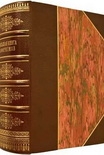It's the End of the World : But What Are We Really Afraid Of? (9781783964758) Roberts, Adam (mobi ebook reader txt) 📖

Book online «It's the End of the World : But What Are We Really Afraid Of? (9781783964758) Roberts, Adam (mobi ebook reader txt) 📖». Author Roberts, Adam
John writes that disaster and affliction had come upon the world, and more specifically upon the bit of the world that really matters, the bit that has a particular covenant with God. He writes that this world had been destroyed by a series of astonishing horrors, but that it still, somehow, continues. He writes that the world ends in fire, just as Jerusalem was burnt; that the mountains of the world collapsed to rubble, just as the Temple was shattered; that disaster rains down from the sky – one of the main legionary forces that wrecked Judea was the ‘Thunderbolt Twelfth’ and that terrible monsters, shaped like men wearing iron breastplates, ruined the land.
Revelation deliberately hides specific Roman references behind codes and hints. There was a good reason for this: direct attacks on Roman authority might invite sanctions, up to and including crucifixion. For example, by styling the invading Roman legionaries as ‘locust– scorpion’ hybrids, John was stressing their monstrosity; but combine locusts with scorpions and we also have a flying insect with a sharp sting – a wasp. The cognomen vespasianus means ‘the waspy one’; both Vespasian and Titus were surnamed ‘the Wasp’. We can imagine John writing that ‘the Wasp’s people’ had come to plague his country, before deciding that was a little too close to the bone and so disguising the wasps as ‘locust–scorpions’.
John’s ‘Beast’ doesn’t have a name, but he does have a designator: 666 – the ‘number of the Beast’, the number most associated with the end of the world. This too is likely to be a code. In Greece at the time, numbers were notated using letters (Arabic numerals didn’t arrive in Europe until the Middle Ages). The chart below shows which letter corresponded to which number.
αʹ 1
ιʹ 10
ρʹ 100
͵α 1,000
βʹ 2
κʹ 20
σʹ 200
͵β 2,000
γʹ 3
λʹ 30
τʹ 300
͵γ 3,000
δʹ 4
μʹ 40
υʹ 400
͵δ 4,000
εʹ 5
νʹ 50
ϕʹ 500
͵ε 5,000
ϛʹ 6
ξʹ 60
χʹ 600
͵ϛ 6,000
ζʹ 7
oʹ 70
ψʹ 700
͵ζ 7,000
ηʹ 8
πʹ 80
ωʹ 800
͵η 8,000
θʹ 9
ϙʹ 90
ϡʹ 900
͵θ 9,000
In the first century CE, it was common to add up the numerical values of the letters of a person’s name to get a number to represent that person. ‘Isopsephy’ – to use the splendidly tongue-twistery technical term – was very common at the time. Graffiti scrawled on the walls at Pompeii from that time often plays these games: ‘I love her whose number is 545’; ‘Amerimnus pondered well his lady Harmonia. The number of her honourable name is 45.’ It’s a fun game,* if you want to keep a name hidden, for erotic reasons – or indeed for reasons of political expediency.
So whose name is encoded in 666? Most scholars think it refers to Nero, who was Roman emperor when the Jewish rebellion began. But Nero died before Jerusalem fell, and it was not he who destroyed the Temple. I think it is more likely that 666 is Titus, the Roman general who ended the world of the Jews when he sacked Jerusalem and tore down the Temple. Titus afterwards became emperor himself. Indeed, if John wrote Revelation in 79, 80 or 81 CE – perfectly possible dates for its composition – he was writing when Titus was Caesar.
My larger point is that John is describing something simultaneously local, specific and historical, and something universal, general and spiritual. He is doing so because for him Jerusalem is both an earthly city and a spiritual actualisation of God in the world. It’s for that reason that Revelation has such a jarring psychedelic oddness to it: what we are looking at are two images superposed one over the other. John of Patmos treated a localised disaster as having a cosmic as well as a local significance. How could it not, for a Jew in 80 CE?
To be clear: I’m not suggesting that John of Patmos wrote a historical account of the fall of Jerusalem rather than a prophetic account of the end of the world. Revelation is, manifestly, the latter and not the former. After all, if John had wanted to write a historical narrative he could have done so, just as his fellow Greek-speaking Jew Josephus did, without any surreal and symbolic bizarreness. John is certainly writing a prophetic account of the end of the world – it’s just that he is using a historical event as the prototype for that coming end. For John, Jerusalem was the heart of the world and its destruction enacts, in all its particulars, the coming destruction of the world.
I’ve discussed John’s Revelation at length partly because it has proved so influential on the way art and literature imagine Armageddon, and because my reading of it draws out the ideas I consider important about how we conceptualise the world’s end: the idea that it happens not once, but over and over again, each resulting in a new beginning; and that the grand statements of apocalypse all relate back to something parochial.
But it’s also important because of the way this story has been interpreted and, in some cases, affected real-world events. People have looked for a reflection of the book’s symbols in the world around them to predict the real end of times.
In 1000 CE, the reign of the English king Ethelred was paralysed not so much by the ongoing Viking raids on his kingdom as by the warnings of his clergy, most prominently Wulfstan, the Bishop of London, that these raids should be welcomed in order that the millennial apocalypse could be fulfilled. The belief that John’s millennium was coming true crippled Ethelred’s ability to defend his kingdom. Various popes, political leaders and VIPs have been proposed for the role of John’s Beast: Pierre Bezukhov, the hero of Tolstoy’s War and Peace (1869), becomes obsessed by a theory that Napoleon Bonaparte is the beast, and tries to make the French emperor’s name fit the number it was designated:




Comments (0)